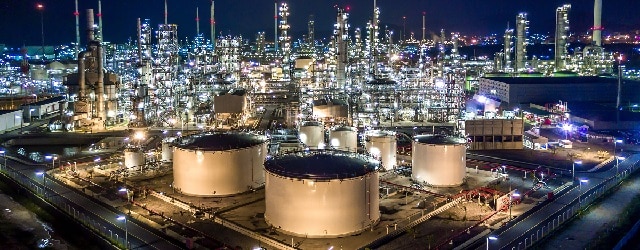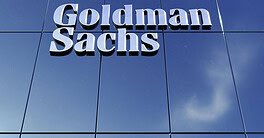Rising gas output is giving Qatar’s economy some buoyancy.

The economic and political blockade of Qatar by its immediate neighbors is now approaching three years. Yet, apart from an initial difficult phase that required the emirate to seek new trading sources, Qatar hasn’t been significantly impacted. Indeed, the economy continues to grow at a higher rate than neighboring Gulf states.
Driven by huge gas reserves, Qatar is the richest country in the world based on GDP per capita. This substantial financial resource has propelled an unprecedented infrastructure program, particularly as the country gears up to host the World Cup. While the scale and number of infrastructure projects will decline, increased gas production, led by the Barzan facility, should boost the economy. Some observers nevertheless see challenges ahead for Qatar.
“Gas supply from the delayed Barzan development remains dedicated to the domestic market, primarily power and water projects, as Qatar builds up its infrastructure ahead of the 2022 World Cup,” says Lynn Morris-Akinyemi, a member of the Middle East Upstream Research team at Wood Mackenzie. But “given the weaker domestic demand outlook, we assume no further phases will be developed,” she says.
Standard Chartered Bank is also slightly less sanguine: “We expect growth to remain sluggish in 2020 on property market weakness, declining government capital expenditures and flat hydrocarbon growth,” says Carla Slim, the bank’s economist for the MENA region. “Medium-term, non-hydrocarbon growth should benefit from additional demand during the World Cup. Post–World Cup, expanded hydrocarbon capacity should be an engine of growth.”
Nonetheless, gas activity will continue to drive the economy. Qatargas’s North Field Production Sustainability project will ensure that current production capacity of the North Field offshore wells is sustained. Meanwhile, the North Field Expansion (NFE) megaproject will boost the production capacity of Qatargas from the current 77 million tonnes per annum to 110 MTPA by 2025.
Challenges Ahead
Underlining the scale of the NFE project is a recent invitation to tender for the construction of more than 100 new liquefied natural gas vessels, launching the largest shipbuilding program in the history of the LNG industry. Overall, the NFE is considered to be one of the largest fully integrated projects worldwide. The capacity of Qatar’s major North Field is forecast to increase to 126 million MTPA (6.7 million barrels per day) by 2027.
But Qatar faces other pressures.
“As we speak, the newest phase in the evolution of global energy markets is just heating up,” notes Samer Mosis, senior analyst with S&P Global Platts Analytics. “Qatar needs to change its tune to adapt to a market where a chorus of competitive forces no longer make it the lead singer.”
Qataris know that their margins will take a hit in a “lower for longer” price environment, but believe themselves well positioned to win the long game thanks to greater volume, the ability to scare off new competition, and relationships with their existing client base. “It will need to lean heavily on all three of these,” says Mosis. “We see more than a quarter of Qatar’s long-term export contracts expire in the coming five years—just as it looks to expand its export capacity by an astounding 33 million tons per annum.”
While Slim expects economic growth to be unspectacular in the short term, looking further ahead she sees Qatar’s financial metrics strengthening. “Liquidity improvement is likely to continue in 2020, given twin surpluses—fiscal and current account—putting upward pressure on Qatar’s credit ratings in the medium term,” she says. “Debt-to-GDP is likely to have peaked in 2019 at just under 55% and should decline beyond 2020. Foreign exchange reserves are stronger, rising by over $20 billion over the past two years.”
Nonresident deposits have recovered and Standard Chartered expects public-sector deposits to continue their downward path, as the Qatar Investment Authority withdraws the liquidity it injected into the banking system in the early months of the regional diplomatic dispute.
Qatar increased its focus on hydrocarbons in recent years, and the Barzan facility is one of the key elements in expanding the emirate’s gas output. “Once at full capacity, the Barzan facility should boost Qatar’s gas production by around 7%, which translates into a rise in real GDP of just over 2%,” says James Swanston, MENA economist at Capital Economics. “We expect this effect to be spread across the next couple of years as production is ramped up. Further ahead, the North Field expansion will provide an additional increase to gas output.”
Diversification Drive
Given the slump in energy prices, some analysts are less optimistic about the scale of the bounty Qatar can expect. “Due to the recent decline in natural gas prices to one of lowest levels on record, the incremental benefit coming out of additional gas production is expected to be limited for the country,” says Junaid Ansari, vice president at KIPCO Asset Management (Kamco) in Kuwait. “In addition, as natural gas prices are expected to remain subdued in the near term due to the global glut, the pace of diversification of economic activity in Qatar would be key to future economic growth.”
Qatar was one of the first Gulf States to embark on diversification from hydrocarbon dependence. This has driven down its fiscal break-even oil price. In addition, says Ansari, “despite declining since the recent peak in 2015, the project market continues to remain vibrant in Qatar, led by both the World Cup preparations as well as investment in general infrastructure.”
As a result, the near-term prospects for the economy, including key sectors like banking and telecom, remains positive, Ansari says. On the other hand, construction and real estate are expected to report a drop in earnings as some big-ticket projects are completed at the same time that falling energy prices weaken earnings for oil and gas companies.
Government capital expenditure is also likely to continue its decline, as most infrastructure spending has already been disbursed. After peaking in 2015, Qatar’s project market has remained flattish since 2018, with around $248 billion worth of projects planned or underway as of February, according to data from Middle East Economic Digest.
This year began with Qatar signing the highest total of contract awards in the Gulf Cooperation Council group, at $2.8 billion, following $4.2 billion in contract awards during the fourth quarter of last year.
“We are seeing a winding down of major infrastructure projects in Qatar,” says Capital Economics’s Swanston, “particularly those for the 2022 FIFA World Cup. In the latest available national accounts figures, the construction and manufacturing sectors of the economy were contracting in annual terms. And as projects continue to wind down ahead of the tournament, the drag on GDP growth will deepen from the non-hydrocarbon sector.”
Oil’s Price Decline
Despite its resilience, the oil price drop has had a notable impact on both Qatar’s hydrocarbon sector and the country’s balance sheet. Hydrocarbon prices, which were already contracting when the fall in oil prices began, declined further and were still contracting last year. The ramping up of LNG gas production—and exports—have helped to offset some of the oil slowdown. Elsewhere, the non-oil sector has received a boost in recent years from increasing construction and manufacturing activity, and the emirate has seen a pickup in private-sector credit growth as well.
Swanston questions whether recent growth has focused on the right sectors. “The props to the non-oil sector are fading, as projects continue to wind down and the credit boom slows,” he says. “Lending has been directed toward some of the worst-performing sectors of the economy, particularly real estate and tourism, and banks have become increasingly reliant on wholesale borrowing, which is unsustainable. Overall, we expect that Qatar’s economy will expand by 1.3% to 1.5% in 2020-2021, as the boost from increased gas production coming online from the Barzan gas field offsets weakness in the non-hydrocarbon sector.”
The economy itself should remain resilient, helped by its major projects, which still represent over 43% of total expenditure. Still, like many major energy producers, Qatar’s real challenges are on the horizon.



